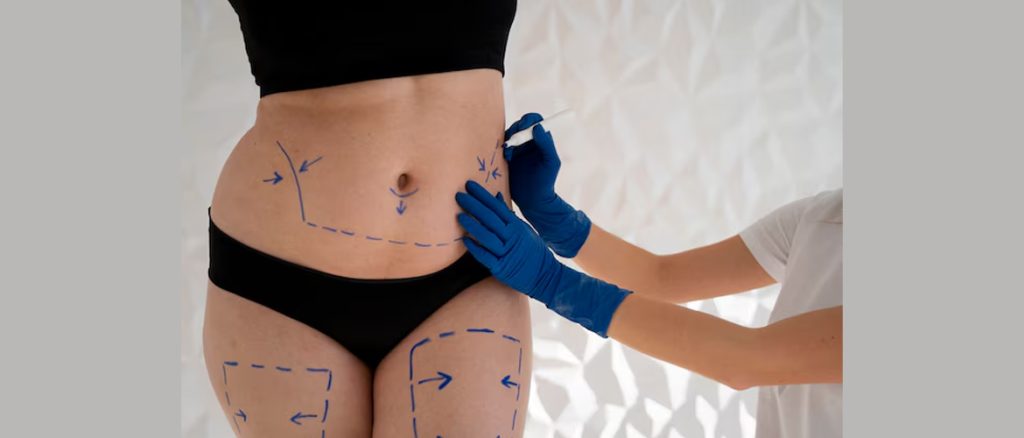What is Liposuction?
Liposuction is a type of plastic surgery. It uses the suction method to remove fat from specific regions of the body. This method is also called lipo, lipoplasty, or body contouring. It is considered the popular cosmetic surgery option and gives a smoother look and shape. Remember that it is not a weight loss procedure.Where Do I Get This Surgery?
- Abdomen, stomach, or waist
- Hips or flanks
- Back or chest
- Face, cheeks, chin or neck
- Buttocks
- Inner knee, calves, or ankles
- Thighs
- Upper arms
Who Requires This Surgery?
- Has excess fat in specific areas that don’t respond to diet and exercise
- Is at or close to their ideal weight
- Has firm, elastic skin
- Has good muscle tone
- Should be a non-smoker
- Has good overall health
- Has realistic goals for the procedure
- Doesn’t have a life-threatening illness or medical conditions that can impair healing
Who Might Not Be a Candidate for This Surgery?
You may not be a suitable candidate for liposuction if you:- Are underweight.
- Have a BMI over 25.
- Have a serious, life-threatening health condition or an illness that may impede healing.
- Have unrealistic expectations for the procedure.
- Have poor skin quality.
Benefits of Liposuction
Liposuction can certainly offer a fast, yet temporary effect of making your fat deposits disappear. You look slimmer and feel good about it. You get the benefit of becoming slimmer without having to go through rigorous diets or exercise. Here are some of the key benefits of liposuction surgery:1. Improved Body Contour
Liposuction removes the stubborn pockets of fats that are resistant to diet and workout, resulting in more sculpted and enhanced body contour.2. Increased Confidence
A notable amount of difference will be seen in the confidence level and body positivity after undergoing liposuction.3. Health Benefits
There are certain health benefits of undergoing liposuction. It helps remove lipomas (benign fatty tumors) from certain areas of the body and also treats specific conditions such as lipodystrophy syndrome.4. Reduces Health Risks
Liposuction reduces the risks of various health issues like heart disease, and diabetes due to its tendency to lower excess fat cells.5. Increases Mobility
This surgery also increases mobility, making physical activities more comfortable and enjoyable. There are also certain conditions in which liposuction can be beneficial, such as benign fatty tumors known as lipomas, a condition called gynecomastia, which is characterized by an abnormally large breast in men, certain metabolic issues related to fat, excessive perspiration in armpits, etc.Is Liposuction Safe?
Liposuction has a good safety record, but every surgery comes with risks. Choosing a trained, board-certified plastic surgeon limits the risks. The fewest risks are involved in procedures for smaller areas of fat removal, which also have shorter durations.Side Effects of Liposuction
1. Bruising and Swelling
Bruising and swelling are common complications that occur after the surgery. It usually takes 2 to 3 weeks to resolve.2. Contour Deformities
Uneven fat removal, poor skin elasticity, and scarring can cause your skin to appear bumpy, wavy, and withered.3. Temporary Numbness
This usually goes away after six weeks, but can sometimes last longer than expected.4. Infection
It is rare, but if an infection does occur, you may need antibiotics, hospitalization or even surgery.5. Blood Clots
These can be dangerous if they travel to other parts of the body, like your lungs.6. Fluid Imbalance
Fat contains a lot of fluid, so your surgeon will inject fluid before the procedure. This can lead to a fluid imbalance that might affect your heart, lungs, or kidneys.7. Allergies
You may also experience hyperpigmentation from adhesive tape or Reston foam. Other side effects include:- Seroma
- Temporary weight gain
- Paresthesias
- Fat embolism
- Pulmonary embolism
- Lidocaine toxicity
- Cannula breakage
- Damages in nerves, blood vessels, muscles, lungs and abdominal organs
- Thermal burn or heat injury
Liposuction Recovery Timeline
| Recovery period | What to expect |
| Week 1 | Monitor pain, swelling, and bruising (requires medication) Significantly limit your activity |
| Weeks 2-3 | You will start feeling much better Return to work (depending on your job) |
| Weeks 4-5 | Bruising should vanish Swelling should start to subside |
| Week 6 and beyond | Continued improvement in swelling; may start to gradually increase activity and do gentle exercise |

